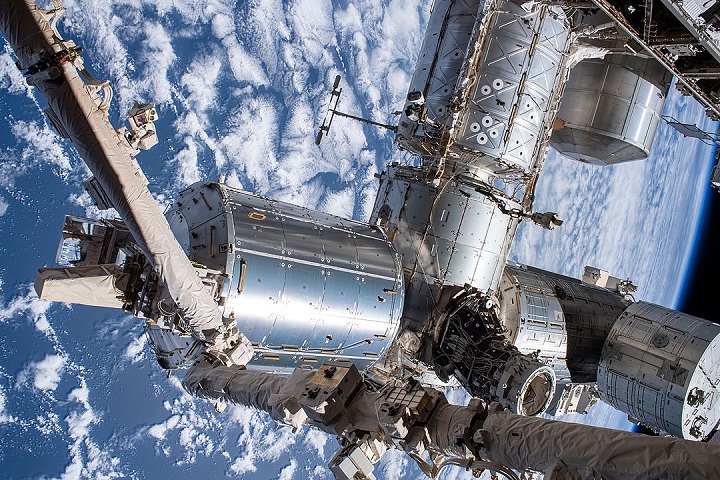1. Our solar system is 4.57 billion years old.
 |
| By NASA Universe - Source: Flickr |
Well, give or take 30
million years. Accurately speaking, it is 4.571 billion years old. Scientists
estimate that in around 5 billion years, our Sun will develop into a red giant.
In around 7.5 billion years the developing surface will swallow the Earth.
2. There are 79 known moons orbiting Jupiter.
.jpg) |
| By DasWortgewand - Source: Wikimedia Commons |
Jupiter is the planet of our
solar system with the most moons, and it also has the largest moon in our solar
system. This moon is called Ganymede and measures 33,279 miles (5,262 km) in
diameter - it's larger than mercury and it is visible with just a pair of
binoculars!
3. The Sun makes a full rotation once every 25 – 35 days.
 |
| By Pablo Carlos Budassi - Source: Wikimedia Commons |
So for us on Earth, a complete
rotation is equal to a full day. However, our giant Sun takes 25 to 35 days of
Earth to make a complete rotation!
4. Due to the Sun and Moon’s gravitational pull, we have tides.
 |
| By Luis Algerich - Source: Wikimedia Commons |
This is because the tidal strength
of the Moon causes the Earth - and the water on it - to stand out on the
closest side to the moon. These bulges are what cause high tides of the world.
5. There are more volcanoes on Venus than any other planet in our solar system.
 |
| By Banco de Imágences Geológicas - Source: Flickr |
There are more than 1,600
main volcanoes across the surface of Venus, including volcanoes as high as 5
miles (8 km) called Maat Mons. However, none of this volcano is known to erupt
at this time and most may have been extinct for a long time.
6. There are more stars in space than sand grains in the world.

There are 10 times more
stars in the night sky than sand grains on earth, with 70 sextillion stars seen
from Earth through a telescope. To place it in amounts, 70 sextillion is this:
70,000,000,000,000,000,000,000.
7. The International Space Station is the largest man-made object sent into space.
 |
| By NASA Johnson - Source: Flickr |
With a length of 119 yards
(109 meters), the International Space Station (ISS) is around 250 miles (400
km) above the Earth and is the third brightest object in the night sky.
8. Any free moving liquid in outer space will form itself into a sphere.

This is because something
called surface tension, which is an imbalance in attracting the inter-molecular.
This occurs in low Earth orbit, too.
9. Our Earth’s rotation is slowing down slightly as time goes on.

This means that the days
were shorter in the past. This is due to the tidal effects that the Moon has on
the rotation of the Earth.
10. The International Space Station orbits Earth every 92 minutes.
 |
| By ESA–L. Parmitano - Source: Wikimedia Commons |
ISS’s speed as it orbits the
Earth is approximately 17,150 miles per hour – which is same as 5 miles per
second!
11. We always see the same side of the Moon, no matter where we stand on the Earth.
 |
| By Rolbox292638 - Source: Wikimedia Commons |
Indeed, the moon turns on
its axis at the same rate that it rotates the earth. It is known as the
synchronous rotation or locking of the tides.
12. There are approximately 100 thousand million stars in our Milky Way galaxy.
 |
| By Pablo Carlos Budassi - Source: Wikimedia Commons |
From all the known galaxies,
our Milky Way galaxy contains the most stars than any other.
13. In 2016, scientists detected a radio signal coming from a source 5 billion light-years away.
 |
| By CSIRO - Source: Wikimedia Commons |
This means that when the
signal starts its journey, the earth does not even exist. The detected signal
is located using the Very Large Array (VLA) of the National Radio Astronomy
Observatory in New Mexico.
14. The distance between Earth & Sun is defined as an Astronomical Unit.
 |
| By Tdadamemd - Source: Wikimedia Commons |
An Astronomical Unit (AU) is
equals to approximately 150 million kilometers or 93 million miles.
15. If Saturn’s rings were 3 feet long, they would be 10,000 times thinner than a razor blade.
 |
| By Jason Major - Source: Flickr |




0 Comments